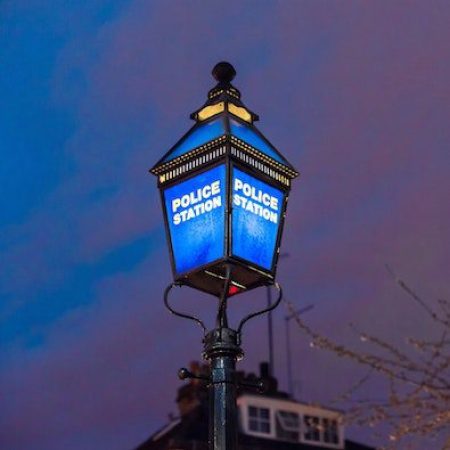The Itchen Stoke shooting of July 1940 illustrates the measures taken to increase food production during the last war. It also depicts the state of mind of isolated farmers, who detested authority.
Sixty-five-year old George Walden, like his father, leased Borough Farm from the Titchborne family. He was a bachelor. His sister Mrs Barbara Roskilly, who lived in Alresford, came to keep house. In April he was ordered to plough up four acres of land by the Hampshire War Agriculture Committee, but refused. The arrival of a posse of Police to possess the farm two months later led to an 18-hour siege, a wounded PC and the death of Walden. An inquest concluded that he had died from “justifiable homicide”.
Police records are full of stories like this and one of the main aims of the Hampshire Constabulary History Society is to preserve them and make them available to the public. Already 80 boxes of records have been donated to the Hampshire Record Office and members of the society and archivist Matthew Goodwin have created an online catalogue. Records prior to 1967 are held by the record offices at Portsmouth and Southampton.
Entering “East Meon” in the online catalogue of the Police collection at the Hampshire Record Office, for example, gives discipline records for officers, 1921-1966, a register of licensed houses 1899-1904 and a cutting from The Children’s Newspaper of 1949 entitled “The village postman goes on his round”, with photographs of the local PC, Dennis Thorne.
Vice-chairman Paul Stickler said: “You can do the same for any name or place or subject. Some of the material is closed for 80-100 years, but we are open to requests for queries, and in many cases are able to supply information, unless there’s some legal restriction. We are doing what we can to make the material available to people carrying out research.
Ironically, the recent controversial closure of police stations has swollen the society’s cache of documents and Police memorabilia, some of which are displayed at the Fire and Police Museum hosted by the Solent Sky Museum, Southampton.
Stickler said: “We have a very rich source, with all sorts of documents – operational orders for events such as a Bob Dylan concert, civil disasters of various kinds, the Bean Field Riots and much else. There are beat registers, detailing officers’ activities, licensing records, accounts of visits to farms and much else. We have thousands of photographs that are being scanned and before long many of them will be searchable.”
One of the saddest stories involved a Chief Constable of Hampshire, Captain Peregrine Fellowes, who has been dubbed “a forgotten hero”. At about 10 o’clock on 2 October 1893, a farmer Mr Best and his wife from Chilland, Martyr Worthy, were in Winchester, riding their pony and trap up the Romsey Road. About a mile past the Police HQ a cow being led to market unnerved the horse. The trap turned over and the couple were thrown to the ground. The horse bolted back down the hill, where the Chief Constable was going off-duty. He and other police officers formed a line to stop the horse. But it went horribly wrong, and in the ensuing chaos, Fellowes sustained injuries from which he died two months later. He had been in the job for less than three years.
The story of policing in Hampshire and the Isle of Wight is told in several books published by the society. It started in Winchester in 1832, three years after the passing of the Metropolitan Police Act. Soon there followed forces in Portsmouth, Southampton and the boroughs. In 1839 Hampshire Constabulary came into being, but it took 50 years for the boroughs to be absorbed, with Basingstoke the last to join in 1889.
The city forces remained separate from the county for much longer, with Winchester only giving up its independence in 1943. It was not until 1967 that the policing of all Hampshire – plus the Isle of Wight – came together under one body, run from a tower block on the West Hill, Winchester, now demolished.
For more information, visit: www.hampshireconstabularyhistory.org.uk, and Hampshire Archives Trust Newsletter, Spring 2019.
With thanks to Paul Stickler with contributions by Mike Pettigrew
Further information is available on the Hampshire Archives and Local Studies blog.

